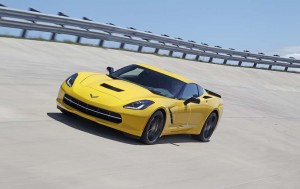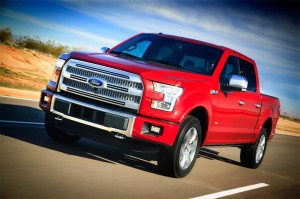While a number of automakers claim they are leaders in innovation, General Motors and Ford can bask in the glory of knowing they can back those claims with hard data.
GM led all automakers for the 11th consecutive quarter in filing for patents while Ford’s new F-150 has more patents filed than any pickup truck in history.
GM’s patents cover a number of areas and include patents for fuel cells and technology that reduces energy consumption and phone apps that make life more convenient for motorists, according to the Patent Board and Clean Energy Patent Growth Index.
The automaker also now leads all companies in total U.S. clean energy patents granted. The Clean Energy Patent Growth Index, an independent monitor of intellectual property involving clean technologies.
During the past year, GM accumulated 1,643 patents, according to the Patent Board study.
“GM’s contribution to innovation in its industry has clearly put it ahead of its competitors,” said Karl R. Wilhelm, chief executive officer of the Patent Board.
Ford’s new aluminum-laden full-size truck required a slew of new products and processes that the Dearborn, Michigan-based automaker either patented or is in the process of doing so. The new switch to aluminum cut 700 pounds from the truck helping with its fuel mileage rating and emissions.
The truck has more than 100 new patents either approved or pending, for technologies ranging from heat-treating the aluminum alloy to a remote-controlled tailgate release. Some of those patents include:
- Innovative LED side-mirror spotlights allow customers to illuminate the side of the vehicle for tasks from setting up a campsite to changing a tire.
- Remote tailgate release automatically lowers the tailgate with the push of a button on the key fob – a first for a pickup truck.
- Ford’s pioneering tailgate step has been completely reengineered so it fully integrates into the tailgate, making it virtually invisible when not in use. The tailgate drops down into position in one easy motion. The grab handle is now housed inside the tailgate, which keeps the inner surface of the tailgate uniformly flat.
- BoxLin cargo management system includes lockable, die-cast aluminum tie-down cleats, and provides a unique interface to the box for improved flexibility and organization, as well as additional locations for tie-downs. Available segment-first cargo ramps can be stowed on the sides of the pickup box via the BoxLink system and mounted quickly on the tailgate to enable easy loading of ATVs, motorcycles or mowers.
While that may not seem like much, but Ford has about 500 patents for its hybrid technology in recent years, including 200 on the power-split technology in the Fusion Energi plug-in hybrid.
With more clean energy patents than any other company, GM is committed to developing and implementing technologies that lessen the environmental impact of vehicle emissions, Lauckner said.
While Honda, Toyota and Hyundai are all bringing fuel-cell based vehicles to the public in the next 18 months, it’s GM that led all companies in fuel cell patents granted in again in 2013. In fact, it has done so each year since 2002. Fuel cell technology could enable vehicles to be fueled with renewable hydrogen, a sustainable alternative to the gasoline-powered internal combustion engine.
(Volvo begins slow tease of XC90 reveal. For more, Click Here.)
However, GM also obtained two dozen patents related to the new eight-speed transmission found in the 2015 Chevrolet Corvette Stingray. The new transmission delivers times that rival the best dual-clutch designs and is expected to contribute up to 5% greater efficiency, when compared to the previous six-speed automatic.
In OnStar’s 18-year history, it has received more than 500 patents for vehicle navigation, safety and telematics and new patents are incorporated into the OnStar Remote Link mobile, allowing users to start, stop, lock, unlock and activate the horn and lights on their vehicle from remote distances.
(Click Here to get Google’s plans for building self-driving cars.)
Drivers also can use RemoteLink to send a destination directly to their vehicle’s navigation system through their smart phone. GM’s 2014 model year lineup includes 36 vehicles compatible with the RemoteLink mobile app.
GM isn’t just resting on its innovation laurels. It seems intent on remaining atop the heap when it comes to patents. It signed a new agreement with the University of Michigan to extend their collaborative automotive research efforts through 2017.
(To see Volvo’s plans to electrify roads, Click Here.)
Launched in 1998, Collaborative Research Laboratories (CRL) at the University of Michigan has helped harness technology devised by students, the university and the automaker. In 2011, it yielded a new process to ultrasonically weld battery tabs together that played a role in enabling the Chevrolet Volt team to offer an eight-year, 100,000-mile warranty on its lithium-ion battery system.
The new Automotive CRL creates an organizational umbrella structure and initially will focus on research into engine systems and advanced manufacturing. In addition, GM and the University of Michigan have an existing, separate CRL that concentrates on smart material developments.
Michael Strong contributed to this report.



These days patents are issued for all sorts of bogus reasons unlike 10 or more years ago. Many people feel the U.S. patent process is being abused and used to generate unearned revenue from inappropriate patent rights. While some patents are legitimate, many are not warranted.